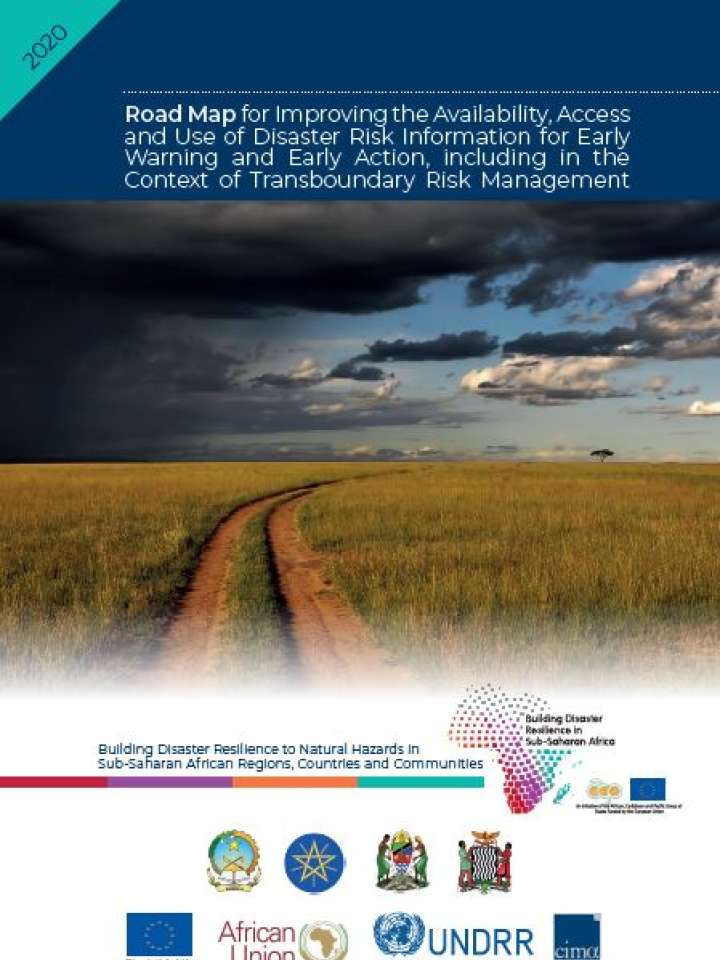Africa Road Map for Improving the Availability, Access and Use of Disaster Risk Information for Early Warning and Early Action, including in the Context of Transboundary Risk Management
This road map identifies activities and practical recommendations aiming to improve the availability, accessibility and use of risk information at the continental, regional, national and local scales, for the African Union Commission (AUC), the Regional Economic Communities (RECs) and four countries - Angola, Ethiopia, UR Tanzania, Zambia - as well as key African stakeholders in the field of DRR. The road map focuses on impact-based Early Warning Systems, and in this context looks to enhance the capacity for data exchange and coordination among national, regional and continental actors. The road map contains a baseline analysis on the status of Early Warning Systems and use of disaster risk information in the target countries, as well as at the continental and sub-continental (regional) levels. The analysis highlights strengths and challenges in four components of Early Warning Systems: Disaster Risk Knowledge, Monitoring and Forecasting, Communication and Dissemination, and Preparedness and Response.
The consolidated baseline analysis was compiled in three phases. First, a desktop review was compiled for each country to support both a draft of the baseline and the organization of country missions where key stakeholders were interviewed using a common survey. After the country missions, a first version of the baseline was compiled and presented for discussion in a multicountry workshop. The revised baseline was consolidated with the help of national DRR focal points and used to develop the recommendations and the road map. Final recommendations were consolidated through a round of national workshops attended by key stakeholders. The present final road map document was presented and endorsed at a multi-country workshop in January 2020, attended by the directors of the respective national DRR authorities, the RECs and AUC.
The final part of each country analysis in the road map, as well as for the supranational level, includes a list of recommendations for each of the four Early Warning System components and traces an optimal process for the country. This is done for each of the countries, as well as for the continental and sub-continental level, and includes common policies for transboundary risk management. The road map builds on the results of a pilot demonstration on the use of the open source platform MyDewetra for exchanging data and information among different national stakeholders, as well as regional and continental institutions. Therefore, recommendations also include a section on the adoption of an integrated IT system for improving availability and accessibility to risk information and Early Warning in general.
Common recommendations for the four analysed countries are highlighted in the conclusion. Finally, the potential advantages of an EWS at the supranational level in Africa is discussed again in summary.
